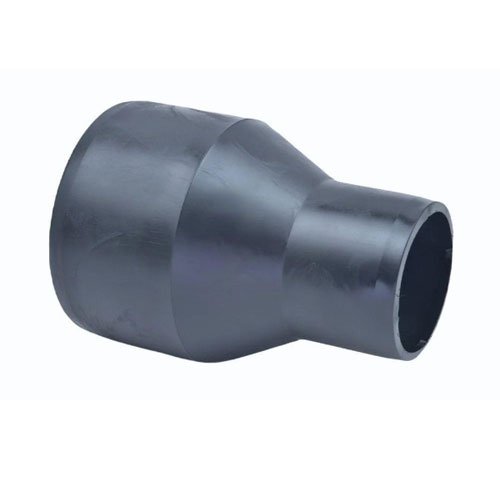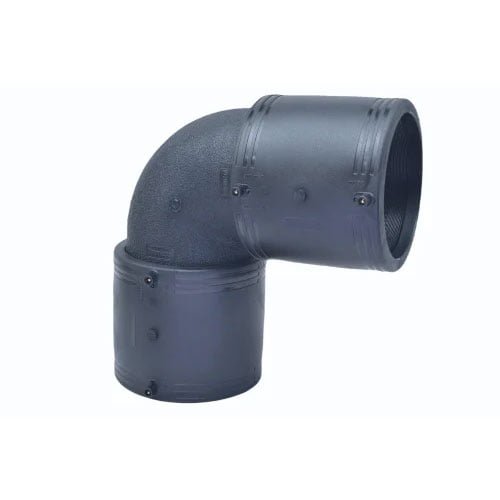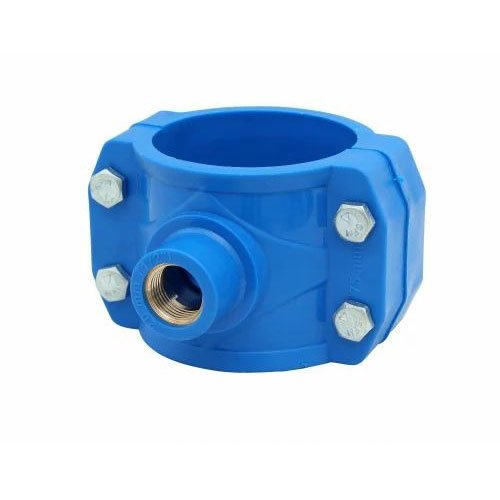In the realm of modern agriculture, efficiency, sustainability, and durability are paramount. As the demand for higher crop yields and optimized water management practices continues to rise, innovative solutions are required. Enter HDPE (High-Density Polyethylene) pipes and fittings, a game-changer in the agricultural landscape. In this comprehensive guide, we’ll delve into the pivotal role of HDPE pipes and fittings in agriculture, exploring their benefits, applications, and contributions to revolutionizing farming practices.
Understanding HDPE Pipes and Fittings: HDPE pipes are made from high-density polyethylene, a thermoplastic polymer known for its exceptional strength, durability, and resistance to corrosion and chemicals. These qualities make HDPE pipes ideal for various agricultural applications, ranging from irrigation and drainage to water supply and distribution systems.
HDPE fittings complement these pipes, enabling seamless connections, bends, and transitions to accommodate the diverse needs of agricultural operations. These fittings are available in various configurations, including tees, elbows, couplers, and valves, providing versatility and flexibility in system design and installation.
Benefits of HDPE Pipes and Fittings in Agriculture:
- Durability: HDPE pipes exhibit outstanding resistance to abrasion, impact, and environmental stress, ensuring long-term performance even in harsh agricultural conditions.
- Corrosion Resistance: Unlike traditional metal pipes, HDPE pipes are immune to rust and corrosion, extending their lifespan and minimizing maintenance requirements.
- Leak-Free Joints: The fusion welding technique used to join HDPE pipes ensures leak-free connections, reducing water loss and maximizing operational efficiency.
- Flexibility: HDPE pipes can withstand ground movement and accommodate soil settling without compromising structural integrity, making them ideal for underground installations.
- Chemical Resistance: HDPE pipes are resistant to a wide range of chemicals, including fertilizers and pesticides, ensuring compatibility with various agricultural inputs.
- Lightweight: HDPE pipes are significantly lighter than metallic alternatives, facilitating easier handling, transportation, and installation, thereby reducing labor and equipment costs.
- Smooth Interior: The smooth interior surface of HDPE pipes minimizes frictional losses and sediment buildup, optimizing flow rates and reducing energy consumption.
Applications of HDPE Pipes and Fittings in Agriculture:
- Irrigation Systems: HDPE pipes and fittings are widely used in drip irrigation, sprinkler systems, and pivot irrigation systems, delivering precise water distribution to crops while conserving resources.
- Drainage Systems: HDPE pipes effectively manage excess water, preventing waterlogging and soil erosion in agricultural fields, orchards, and vineyards.
- Water Supply Networks: HDPE pipes serve as reliable conduits for transporting potable water from source to destination, ensuring reliable access to water for livestock, crops, and farm operations.
- Aquaculture: HDPE pipes are utilized in aquaculture setups for fish farming, providing efficient water circulation, aeration, and waste management solutions.
- Livestock Watering Systems: HDPE pipes deliver water to livestock watering troughs and tanks, offering a hygienic and durable solution for animal husbandry operations.
HDPE pipes and fittings have emerged as indispensable components in modern agricultural practices, offering unparalleled durability, versatility, and efficiency. From irrigation and drainage to water supply and aquaculture, their contributions to enhancing crop yields, conserving resources, and promoting sustainable farming practices are undeniable. As agriculture continues to evolve, the role of HDPE pipes and fittings will remain pivotal, driving innovation and progress in the field. Harnessing the power of HDPE technology, farmers can navigate the challenges of a changing climate and growing demand, ensuring a brighter and more prosperous future for agriculture.
The Role of HDPE Fittings in Modern Farming
In the dynamic landscape of modern agriculture, efficiency, sustainability, and precision are paramount. Among the array of tools and technologies available to farmers, HDPE (High-Density Polyethylene) fittings stand out as essential components in optimizing irrigation systems, drainage networks, and water supply networks. In this article, we explore the diverse applications and benefits of HDPE fittings in agriculture, highlighting their crucial role in enhancing productivity and sustainability on farms worldwide.
Enhancing Irrigation Systems: Irrigation is the lifeblood of agriculture, ensuring optimal moisture levels for crops while maximizing water conservation. HDPE fittings play a vital role in irrigation systems by facilitating seamless connections between pipes, valves, and other components. Whether it’s drip irrigation, sprinkler systems, or pivot irrigation, HDPE fittings enable precise control over water distribution, minimizing waste and maximizing efficiency. Additionally, the leak-free joints provided by HDPE fittings ensure reliable performance, reducing the risk of water loss and damage to crops.
Facilitating Drainage Networks: Proper drainage is essential for maintaining soil health and preventing waterlogging, especially in regions prone to heavy rainfall or poor soil drainage. HDPE fittings are instrumental in constructing efficient drainage networks, allowing farmers to manage excess water effectively. From field drainage systems to subsurface drainage installations, HDPE fittings enable the seamless assembly of pipes, culverts, and outlets, ensuring optimal water flow and soil moisture levels. Their corrosion-resistant properties ensure longevity, even in challenging agricultural environments.
Ensuring Reliable Water Supply: Access to clean, reliable water is critical for agricultural operations, supporting livestock, crops, and farm infrastructure. HDPE fittings are integral components in water supply networks, enabling the construction of robust pipelines and distribution systems. Whether it’s transporting water from wells, reservoirs, or municipal sources, HDPE fittings provide leak-proof connections, minimizing water loss and ensuring uninterrupted supply to farmsteads and fields. Moreover, their resistance to chemicals and corrosion ensures the integrity of water quality, safeguarding the health of plants, animals, and consumers.
Adapting to Varied Applications: One of the key advantages of HDPE fittings is their adaptability to diverse agricultural applications. Available in a wide range of configurations, including couplers, elbows, tees, and reducers, HDPE fittings offer flexibility in system design and installation. Farmers can customize their irrigation, drainage, and water supply systems to suit specific field layouts, crop types, and terrain features, maximizing operational efficiency and resource utilization. Additionally, the lightweight nature of HDPE fittings simplifies handling and transportation, reducing labor and equipment costs associated with installation.
Promoting Sustainability and Resilience: In an era of climate change and resource scarcity, sustainable agricultural practices are essential for long-term viability and resilience. HDPE fittings contribute to sustainability by minimizing water waste, reducing energy consumption, and enhancing soil health. By optimizing irrigation efficiency and drainage management, farmers can mitigate the impact of droughts, floods, and soil erosion, preserving ecosystem integrity and supporting biodiversity. Furthermore, the recyclability of HDPE materials ensures that end-of-life fittings can be repurposed or remanufactured, minimizing environmental impact and closing the loop on resource utilization.







